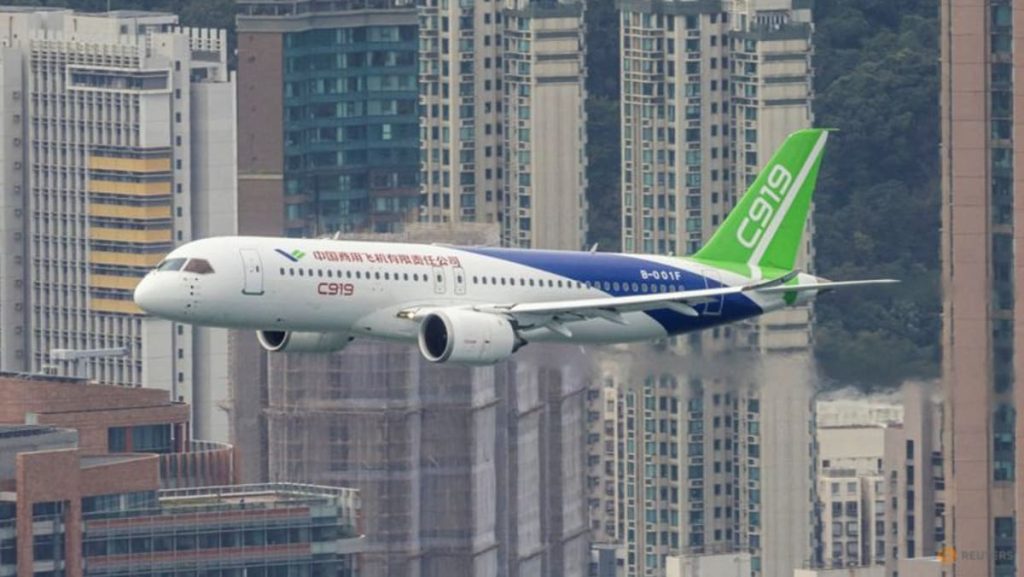The Comac C919, China’s first foray into the narrow-body jetliner market, has been touted as a symbol of the nation’s growing technological prowess. Its international debut at the Singapore Air Show, marked by an order from Tibet Airlines for 40 aircraft, was carefully orchestrated to project an image of global competitiveness. However, a closer examination reveals a more nuanced reality. While the orders, predominantly from Chinese state-owned airlines, contribute to a veneer of success, they underscore the limited international appeal of the C919. This lack of global interest stems from a combination of factors, including concerns about its reliance on Western technology and lingering questions about its originality.
Despite being promoted as a domestically produced aircraft, the C919 heavily relies on Western-sourced components, particularly for crucial systems like avionics and engines. This dependence undermines the narrative of indigenous innovation and raises questions about the true extent of China’s self-sufficiency in the aerospace sector. Furthermore, suspicions of intellectual property infringement, particularly echoes of Boeing’s 737 design, have cast a shadow over the C919’s development, potentially deterring international buyers who prioritize originality and intellectual property security. The reliance on foreign components and the cloud of alleged intellectual property theft underscore the challenges China faces in establishing itself as a genuine competitor in the global aircraft manufacturing arena.
The C919’s development represents a significant step forward from China’s earlier attempt at commercial aircraft manufacturing, the ARJ21. The ARJ21, born from a failed partnership with McDonnell Douglas in the 1980s, inherited an outdated design based on the MD-80. This legacy resulted in performance limitations and hindered its market acceptance, even within China. The ARJ21 experience exposed the pitfalls of relying on outdated technology and highlighted the need for a fresh approach to aircraft development. It served as a valuable, albeit costly, lesson for China’s aviation ambitions.
The C919 was conceived as a departure from this troubled past, a clean break from the legacy of joint ventures and outdated designs. It was designed to incorporate modern engineering principles and the lessons learned from the ARJ21 program. Its development has served as a crucial testing ground for China’s aerospace capabilities, not just in terms of engineering but also in marketing and international outreach. The C919’s journey reflects China’s determination to learn from past mistakes and build a truly competitive aircraft.
However, the C919 is just one piece of China’s broader aerospace ambitions. The development of the wide-body C929, initially planned as a joint venture with Russia, represents an even more ambitious undertaking. The project, now solely under Chinese control following Russia’s invasion of Ukraine, aims to challenge the dominance of Boeing and Airbus in the long-haul, high-capacity aircraft market. The C929’s success could signify a pivotal moment for China’s aerospace industry, marking a transition from symbolic achievements to a genuine threat to established players.
Initially, the C929 was slated to utilize Western-made engines from manufacturers like Rolls-Royce and General Electric. However, the shift towards developing the indigenous CJ-2000 engine underscores China’s commitment to reducing its reliance on foreign technology. The successful development and integration of the CJ-2000 would not only enhance the C929’s “homegrown” credentials but also strengthen China’s position in the global aviation supply chain. The C929 project embodies China’s long-term strategy to achieve technological independence and become a major force in the global aerospace industry. This ambition extends beyond simply producing aircraft; it encompasses a vision of creating a self-sufficient and globally competitive aerospace ecosystem.

